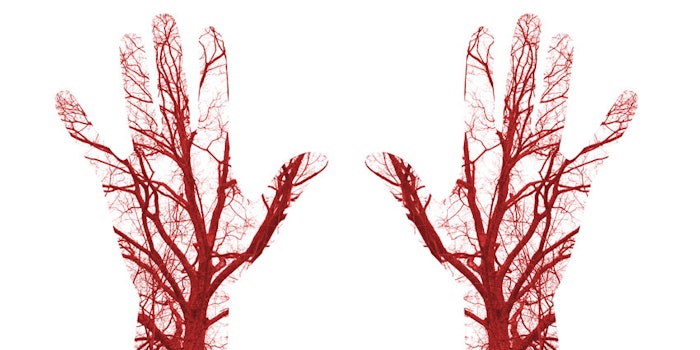
Skin health or condition vs. blood flow efficacy has been of high interest in recent skin care research. For example, as Kao Corp. previously reported, youthful skin is connected with increased blood flow. In their latest work, Kao researchers have uncovered an approach to simultaneously visualize the activities of blood vessels and capillaries in deep skin tissues.
This research was recently published in part in Skin Research and Technology. Specifically, as the company explained, vessels and capillaries in the deeper layers of the skin are detected simultaneously in videomicroscopic vascular images. These are then separated using an automatic visual extraction technology. The technique is based on previous studies measuring blood flow changes by separating melan, hemoglobin and shadow images.
For the new work, images of the inner upper arm skin were acquired using videomicroscopy. Then, an algorithm using independent component analysis (ICA) and the Frangi filter was constructed to extract the capillary regions. The capillary extraction images were compared with direct observations to verify accuracy. In addition, physiological responses of skin exposed to carbon dioxide (CO2) water, local heating and methyl nicotinate were tested to assess blood vessels with different mechanisms of action and layer depth.
Results suggest this algorithm can quantitatively analyze physiological changes in capillaries on the skin surface. According to Kao, it has been known that blood vessels in the deeper layers and capillaries in the skin surface differ in regard to their roles and activities. And that these differences are considered to be closely linked with skin condition. However, it has been difficult to obtain details regarding blood flow for different vessels at an identical site simultaneously. This was the focus of the present work.





!['We believe [Byome Derma] will redefine how products are tested, recommended and marketed, moving the industry away from intuition or influence, toward evidence-based personalization.' Pictured: Byome Labs Team](https://img.cosmeticsandtoiletries.com/mindful/allured/workspaces/default/uploads/2025/08/byome-labs-group-photo.AKivj2669s.jpg?auto=format%2Ccompress&crop=focalpoint&fit=crop&fp-x=0.49&fp-y=0.5&fp-z=1&h=191&q=70&w=340)




